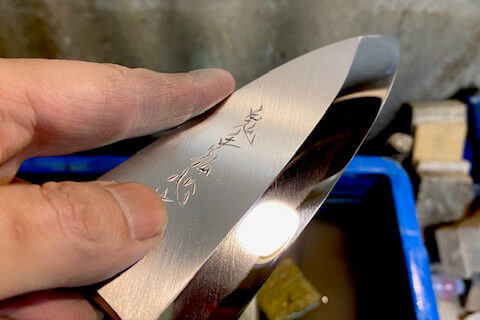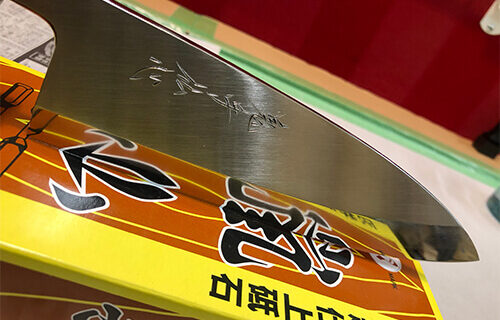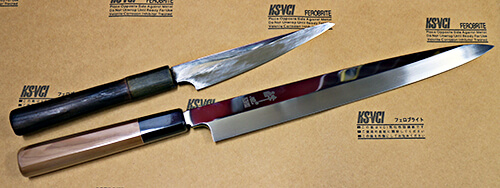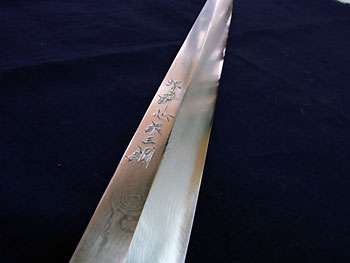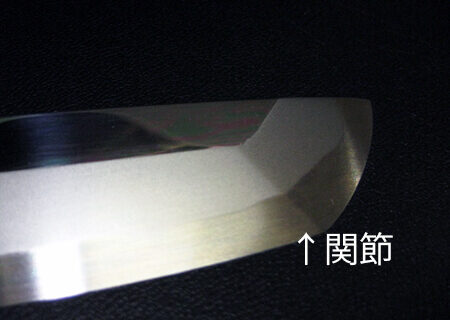Confronting Gin San ko
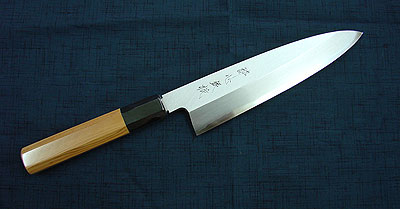
I have been striving to find a suitable sharpening stone (or the overall sharpening process) for sharpening Gin San Ko. However, I haven’t had that ‘Yes!’ moment or achieved a perfect compatibility and sharpening. Even if something seems to work initially, it’s only temporary, gradually fading away. Perhaps it’s just the nature of Gin San Ko, and I should accept that. However, I struggle to explain it effectively when customers ask about sharpening Gin San Ko. That’s why I continue my experiments.
So, I tried a combination of a specific sharpening stone and angle, and it gave me a different sensation than before. I decided to test it with Shihan Ueda using a 300mm Yanagiba knife.
Shihan: “Gin San Ko, huh? Oh, it has a nice crisp edge! I wonder how long it will last?”
Tatsuya: “Please use it as you normally would, and when it starts to lose its sharpness, please show me the edge.”
Shihan: “Got it! I’ll put it aside without sharpening.” A few days later, I received a phone call.
Shihan: “Wow, it’s amazing… I’ve reconsidered Gin San Ko!” Lately, Shihan Ueda has been assisting as a super helper at the sushi master’s place, “Sushi Tatsu,” helping with sushi preparation. He used the knife at both Sushi Tatsu and Uedaya, and this phone call came a few days later.
The condition of the knife is that it was passed with a Honbaduke finish, where it was sharpened to a reasonably thin edge and had Itohiki added. Guess what! They even used that knife for cutting eel bones… It sounds like a harsh test, even though it’s a trial. They used one at the sushi restaurant and two at Uedaya (one of them for a large eel!). But still, they mentioned that the knives maintained a sharp edge that is fully usable… We decided not to do any sharpening and let them continue using the knives for a bit longer… The test will end once they determine that it can no longer perform the job! Note: We always have INOX Honba ready for testing, as it’s okay for it to become dull at any time!
Once it’s finished, I will personally go and retrieve the knives and try sharpening them myself to see how well I can restore the original edge. I also want to see if I can achieve the same results and if the chefs can bring out the sharpness as well. I believe that it’s meaningless if only I, as a knife shop owner, can sharpen it… If we can achieve those results, I would like to feature a special article on Ginsanko in our blog, either as a regular feature or a hidden feature. The combination of different grits of sharpening stones, the angle of Itohiki, and the characteristics of Ginsanko steel. Knowing and using them is the key!
